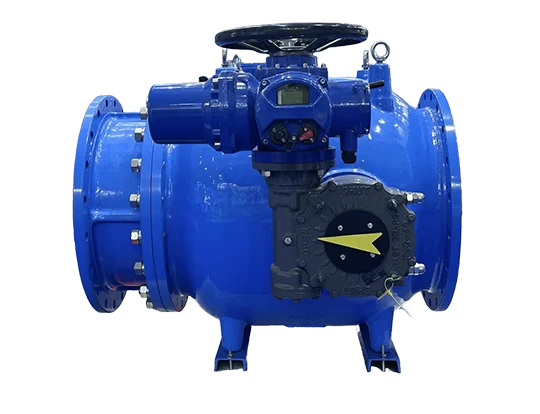- English
- Español
- Português
- русский
- Français
- 日本語
- Deutsch
- tiếng Việt
- Italiano
- Nederlands
- ภาษาไทย
- Polski
- 한국어
- Svenska
- magyar
- Malay
- বাংলা ভাষার
- Dansk
- Suomi
- हिन्दी
- Pilipino
- Türkçe
- Gaeilge
- العربية
- Indonesia
- Norsk
- تمل
- český
- ελληνικά
- український
- Javanese
- فارسی
- தமிழ்
- తెలుగు
- नेपाली
- Burmese
- български
- ລາວ
- Latine
- Қазақша
- Euskal
- Azərbaycan
- Slovenský jazyk
- Македонски
- Lietuvos
- Eesti Keel
- Română
- Slovenski
- मराठी
- Srpski језик
How to Ensure Stable Operation of an Electric Actuated Plunger Valve?
2025-08-01
 An electric actuated plunger valve is a precision control device that uses a linear motor to drive a plunger to achieve fluid flow control. Its stable operation relies on the integrity of the mechanical seal, the coordination of the electronic control system, and the compatibility of the media.
An electric actuated plunger valve is a precision control device that uses a linear motor to drive a plunger to achieve fluid flow control. Its stable operation relies on the integrity of the mechanical seal, the coordination of the electronic control system, and the compatibility of the media.
How can stable operation be ensured?
The width of the wear mark on the hard coating on the plunger rod of the electric actuated plunger valve should be inspected periodically. If it exceeds the allowable threshold, the entire valve should be replaced. Crystallized deposits on the inner wall of the guide bushing should be removed with a chemical dissolution agent to prevent seal failure caused by uneven wear of the plunger. Decreased return spring preload will increase closing response time, so the dry stroke time should be regularly verified.
The stuffing box uses a stepped compression design. During maintenance, loosen the gland bolts in sequence to avoid sudden stress changes. V-type packing replacement intervals should be shortened for media containing solids. Pre-compression of the new packing should eliminate initial running-in leakage.
A soft stop buffer is provided at the end of the actuator stroke to prevent mechanical overload from impacting the electric actuated plunger valve. Regularly verify the linearity of the position feedback potentiometer to prevent oscillation caused by valve position signal drift. Motor winding insulation resistance testing should be performed after use in a humid and hot environment to eliminate leakage paths.
In addition, for high-viscosity fluids, a preheating device is required to maintain fluidity in the valve cavity and prevent plunger sticking. In case of cavitation, a diffuser should be installed after the valve to reduce the impact of cavitation collapse. If the valve is stationary for an extended period, manually cycle the plunger to prevent sticking on the sealing surface.




